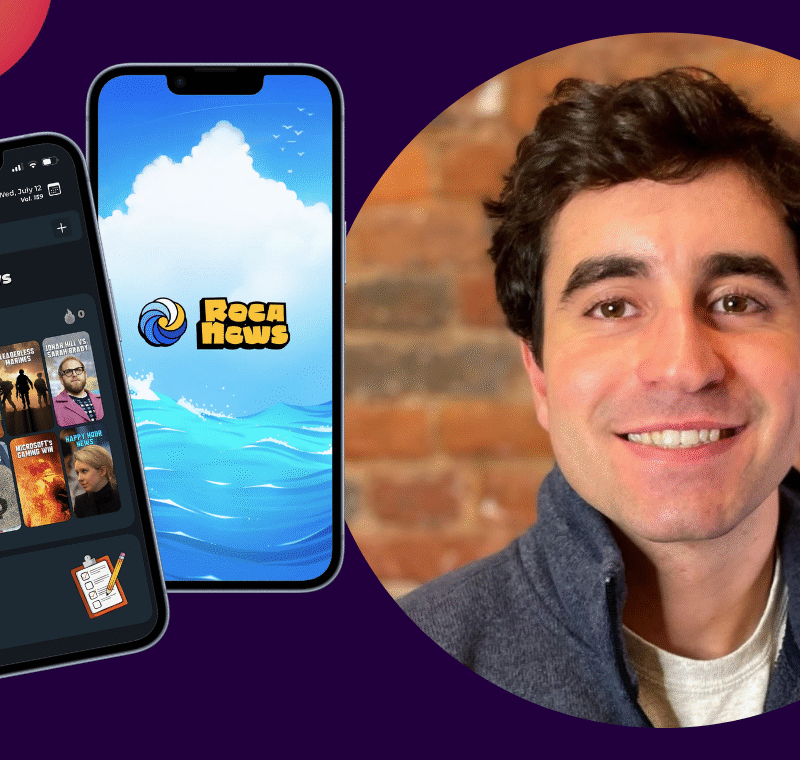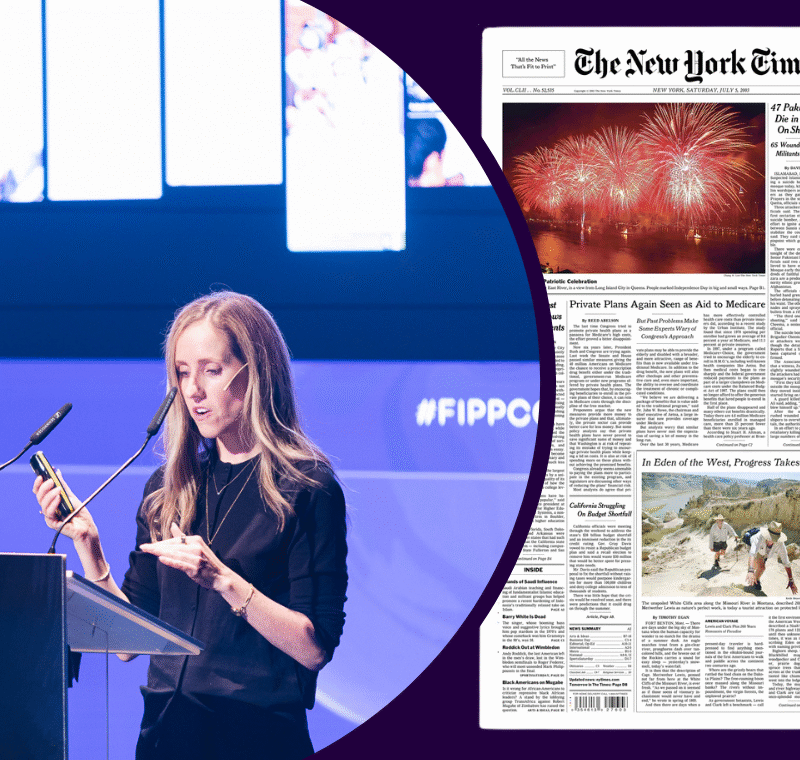Yahoo editor on growth and change: “Once you figure it all out, you are dead.”
Serwer spoke to Olga Nasalskaya about differences between working for legacy media and technology companies, the company’s plan to win over readers and experimenting with video formats.
You are not new to digital businesses, but have spent the last decade working in ‘legacy’ media. How are things at Yahoo?
It’s wild and crazy and I’m enjoying that. I was one of the original business journalists focused on digital when I started my first blog, Street Life, in the 1990s. When you work for a legacy media you always have so much reliance on that legacy media. At Fortune, the sales team has to focus on print and digital, which can be a distraction. Here at Yahoo, it’s all digital.
Is working for a technology company different to working for a media company? Is Yahoo like Hooli at HBO’s Silicon Valley TV show?
Totally, it’s just like that! (laughs). Yahoo is a unique company. It’s a combination of technology and media. There is a lot of ‘figuring things out’ happening at Yahoo, but that’s a really positive sign. Once you figure it all out, you are dead. You always have to keep growing and changing, and we are doing a lot of that at Yahoo.
Tell us about the Yahoo Finance portfolio?
My business is to raise the profile of Yahoo Finance and to make it a part of the public conversation. We hope to achieve that by creating great original stories and capitalising on our content aggregation ability. We want to increase the audience size and extend the time spent on Yahoo Finance. The best way to achieve these goals is by expanding our premium content with a particular emphasis on creating video. We have a studio here. We are creating up to 50 videos a week, including two live shows every day. Almost all of the original stories we produce now have a video. This format works really well, both on desktop and mobile. Once produced, these stories appear on the Yahoo Finance home page, and sometimes some stories are taken to the Yahoo News’ home page. We have breaking news, feature stories and contributor pieces. Down the road, we are looking to build live events, working with other properties across Yahoo, but it’s still early days. Right now, we’re mostly trying to do outstanding reporting. We want to get our journalists to be guests of The Today Show and we want to win journalism awards.
What are your best stories so far?
We have already produced a number of great pieces. Our reporter, Mandi Woodruff, wrote Who killed Heald College, about an education scandal, and In post-Katrina New Orleans, Black men lift each other up, just in time for Hurricane Katrina, 10 years later. We also broke the story on a white supremacist in the US who was funding a number of Republican candidates, and who actually got his money by marrying a widow of a Jewish businessman. We’ve also broken stories about Google, Wal-Mart and some others.
How do you try to reach readers who don’t have Yahoo account but read financial news?
One of the things about Yahoo Finance that you have to remember is that we have that incredible aggregation power with unmatched partnerships. We’ve been in the aggregation business forever. If you want a story about, say, the market crash in August, you have two options: one is to do search, and second, is to go to Yahoo Finance. At legacy media, say, The Wall Street Journal, you will have two guys working on that story. At Yahoo Finance, you will get tens of stories on this topic. Now, our crown jewel is market data. A lot of people come to Yahoo Finance for that. It’s free and we are making sure that readers find the best real time market data and news. We compete with Bloomberg there, and you pay Bloomberg thousands of dollars a month. We have incredible value proposition for our customers, which is market data, aggregated and original content. We are developing signature voices the same way news organisations do. Yahoo already has Katie Couric and David Pogue, and we want to bring more people like that to Yahoo Finance.
Yahoo’s mobile usage vs desktop usage? Any particular finds on how to work with readers on mobile platforms?
Desktop usage at Yahoo Finance is very strong, because a lot of people are looking at us while they are at work. Over time, the distinction between desktop and mobile usage will decrease. In terms of user experience it will not change, and it will only get more sophisticated and mature. So I think that on the one hand mobile usage is a bit of a puzzle, but on the other hand it is my job to create great ‘read meat’, great content, for our customers. Great content is timeless. From the editorial standpoint, you have to have an open mind. There is another myth about mobile, “no one reads long stories on their phones!” – well, sometimes people do! Increasingly audiences are getting their news from mobile. So you can’t have 30 really long stories, although if you do, those stories are summarised anyway. When you tap on the short description, and you see that the full story is long, maybe you will want to read it. It all depends. You want to make sure that you are fast, and that you are on top of your story.
Yahoo has a massive amount of user data. Something that legacy companies have to pay for, and most of the times their options are limited. How is this helping Yahoo in releasing timely financial news and other content?
We are early days there. And when you talk about data, there are a lot of different teams at Yahoo, and they don’t talk to each other because they shouldn’t. We have huge privacy sensitivity at this company, not unlike Google and Facebook. There is a lot of data involved at Yahoo Finance. Stock portfolios that people have, for example, could open up endless opportunities for editorial team to work with. We have internal discussions about how to harvest this data in a way that is helpful for our customers and not intrusive. It’s a really interesting discussion. We test these things and we make sure that we are striking the right balance. Alerts via Yahoo Finance app is the place we are exploring the most at the moment.
You have a very unexpected video feature on Yahoo Finance: Friday Cocktail. Explain.
Just because we are Yahoo Finance, we are not going to do only long form enterprise stories. We are going to do signature interviews from people you have not heard from before, we are going to create viral content and we are going to have some fun. After what was going on with markets in August, maybe having a Friday Cocktail is not a bad idea. We always experiment.
How is social media helping your strategy?
More than half a million users is a good start, but we will get bigger. Social is a new way to distribute content. We have relationships with our media partners and social media companies in terms of how social media links are hosted, and where the links go. It’s important for us to be on social media, and it’s important for our journalists to develop their voices and personal brands.
How do you make financial news appealing to Millennials, or for that matter, to any reader?
A lot of people are saying that Millennials are completely different to everyone else. But they are just young people. Every generation is different. This specific generation is shaped by at least two powerful things: One – obviously, technology, and two – the great recession. That has really changed their behavior. They care about their phones more than the stock market. Yes, it has been a bit challenging, but there are a lot of new products that speak to millennials, and we try to work with those products. Venmo, which is a digital way of sharing money, is popular among younger people. This app is so different from those big institutions that seemed to be a real problem in 2008 and 2009. Those are interesting things to explore. Ultimately, millennials want to know the same things as other people want to know about: saving money, being secure in buying a home, having enough money for kids, investing, mortgages. There is a lot of work to be done in figuring out how to speak to them, but it can be done.
Your colleague from Time Inc., Martha Nelson, has just been appointed editor-in-chief of Yahoo. Are you excited?
I worked with Martha at Time, she is a great visionary who really understands media. She understands what it means to have a portfolio of different media brands and how those different kinds of businesses fit together.
What are the challenges for Yahoo Finance?
We want to make Yahoo Finance the ultimate business news destination. Because of aggregation power, we have every story under the sun, but we want to have the best original stories, too.
More like this
Harvard Business Review’s editor on staying true to your audience
Harvard Business Review’s editor-in-chief: “We are in the second wave of innovation”
Harvard Business Review’s creative director on the challenges of a fast-developing brand









